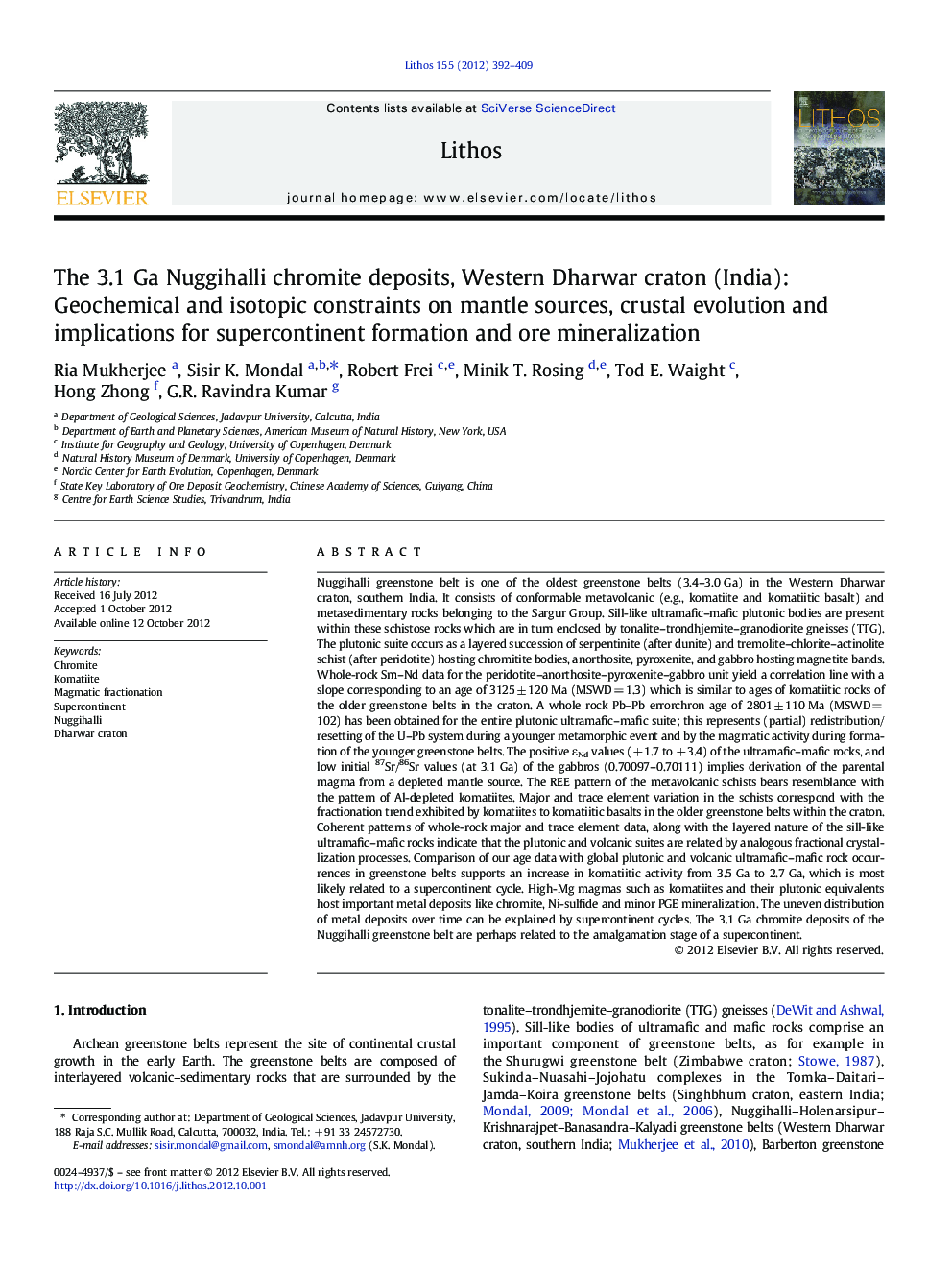| Article ID | Journal | Published Year | Pages | File Type |
|---|---|---|---|---|
| 4716366 | Lithos | 2012 | 18 Pages |
Nuggihalli greenstone belt is one of the oldest greenstone belts (3.4–3.0 Ga) in the Western Dharwar craton, southern India. It consists of conformable metavolcanic (e.g., komatiite and komatiitic basalt) and metasedimentary rocks belonging to the Sargur Group. Sill-like ultramafic–mafic plutonic bodies are present within these schistose rocks which are in turn enclosed by tonalite–trondhjemite–granodiorite gneisses (TTG). The plutonic suite occurs as a layered succession of serpentinite (after dunite) and tremolite–chlorite–actinolite schist (after peridotite) hosting chromitite bodies, anorthosite, pyroxenite, and gabbro hosting magnetite bands. Whole-rock Sm–Nd data for the peridotite–anorthosite–pyroxenite–gabbro unit yield a correlation line with a slope corresponding to an age of 3125 ± 120 Ma (MSWD = 1.3) which is similar to ages of komatiitic rocks of the older greenstone belts in the craton. A whole rock Pb–Pb errorchron age of 2801 ± 110 Ma (MSWD = 102) has been obtained for the entire plutonic ultramafic–mafic suite; this represents (partial) redistribution/resetting of the U–Pb system during a younger metamorphic event and by the magmatic activity during formation of the younger greenstone belts. The positive εNd values (+ 1.7 to + 3.4) of the ultramafic–mafic rocks, and low initial 87Sr/86Sr values (at 3.1 Ga) of the gabbros (0.70097–0.70111) implies derivation of the parental magma from a depleted mantle source. The REE pattern of the metavolcanic schists bears resemblance with the pattern of Al-depleted komatiites. Major and trace element variation in the schists correspond with the fractionation trend exhibited by komatiites to komatiitic basalts in the older greenstone belts within the craton. Coherent patterns of whole-rock major and trace element data, along with the layered nature of the sill-like ultramafic–mafic rocks indicate that the plutonic and volcanic suites are related by analogous fractional crystallization processes. Comparison of our age data with global plutonic and volcanic ultramafic–mafic rock occurrences in greenstone belts supports an increase in komatiitic activity from 3.5 Ga to 2.7 Ga, which is most likely related to a supercontinent cycle. High-Mg magmas such as komatiites and their plutonic equivalents host important metal deposits like chromite, Ni-sulfide and minor PGE mineralization. The uneven distribution of metal deposits over time can be explained by supercontinent cycles. The 3.1 Ga chromite deposits of the Nuggihalli greenstone belt are perhaps related to the amalgamation stage of a supercontinent.
► Chromiferous ultramafic–mafic rocks in Nuggihalli have yielded 3125 ± 120 Ma Sm–Nd age ► Age is similar to age of komatiites in the craton within limits of errors ► Parental magma is an Al-depleted komatiite derived from a depleted mantle source ► Layered ultramafic–mafic rocks are plutonic equivalents of metavolcanic schists ► 3.1 Ga chromite deposit of Nugggihalli is concurrent with a global komatiitic pulse.
